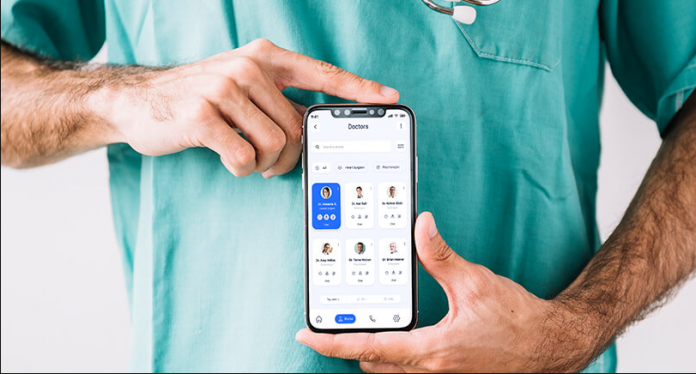It might be hard to look for the best electronic medical record software for your practice. It takes a lot of internet research and demo attending to find an EMR that hits the ideal features and pricing point, whether establishing a new virtual medical practice management, abandoning paper charts, or attempting to convert to a new programme.
You need a platform that can handle various essential tasks for your medical practice, including medical billing and coding, practice management, record keeping, and charting. In addition, that programme will probably be in charge of additional jobs in between.
A frictionless experience is essential because you and your staff will rely on that electronic health record for various daily functions. The main characteristics of EHR software, telehealth platforms, practise management software, medical billing software, revenue cycle management, and EHR deployment may all be understood with the aid of this blog.
EHR Functions
The electronic health record has advanced considerably in recent years. What was formerly a slow, desktop-only programme now functions quickly on both desktop and mobile. Given that smartphones and tablets are almost universal and play a significant part in how many practices operate on a daily basis, your EHR should be easily integrated into a mobile ecosystem.
Mobile EMRs provide greater flexibility and enable more intimate patient interactions. But that’s only the first step; once the software is installed on your tablet, many healthcare professionals forget to check that it is charting well based on the requirements of their particular practices.
Make sure the platform you choose for your electronic medical record contains editable medical forms and templates that allow you to capture information and how it best suits you. Your EHR should ideally come with some pre-made templates you can utilize right away, but it should also be able to support your unique workflows as you refine them over time.
To make filling out a patient’s document even simpler, seek intelligent charting tools in addition to the actual forms that doctors use. The dynamic photo charting tool is one such thing to watch out for. As a result, a practitioner can take a photo, upload it to the chart, and add any necessary annotations without ever leaving the EHR.
Medical speech-to-text, which enables providers to transcribe notes verbally into the programme, is another well-liked function. These kinds of features will ultimately save your practice a lot of time.
The second factor to consider is whether your vendor interfaces with several labs. Integrating local and national labs is essential to ensuring that doctors receive the lab findings they require quickly. The EHR software should ideally enable automatic uploading of the results to the patient’s chart.
Finally, check that your EHR platform offers eRx functionalities if you intend to give patients prescriptions for pharmaceuticals. A key function of contemporary practises e-prescribe, which enables them to electronically deliver prescriptions, even those for prohibited medications, from the patient’s chart to the pharmacy of their choice.
Essentials of Practice Management Software
Beyond the tasks directly related to what occurs during appointments, an EMR system should offer a number of capabilities that facilitate practice administration. By automating administrative activities and eliminating the need for additional staff, these solutions can help practices save both time and money. For example, the cost of hiring additional employees to handle the practise management workload can force a physician to see more patients while allocating less time to each to cover the costs.
To reduce that administrative strain, you should seek features in your practice management software. Online scheduling is a key component. This eliminates the need for patients to wait in a backed-up system by enabling them to make their appointments through a patient portal.
Features of Telehealth to Prioritize
Telehealth has fast become a necessity in the healthcare sector thanks to innovations like remote patient monitoring equipment and video visits. However, most patients want telemedicine to continue for a long time since they have gotten accustomed to it. You need to select a telehealth software provider because it’s likely that your patients have smartphones, and you want to be ready to meet them there.
Since so many new services are being developed in response to the pandemic environment, not all services are created equal. But a top-notch telemedicine platform is more than just the video consultations on which it is based.
Options for Medical Billing and Revenue Cycle Management
Even though medical billing and coding are complicated and time-consuming, the appropriate technology may significantly enhance your billing procedures and revenue collection. Choosing an EHR with integrated medical billing solutions will also be much easier.
By automating parts of the billing process prone to human mistakes, the finest healthcare software development can save time processing claims while increasing the percentage of clean ones. Typically, these will be aimed towards data entry activities. An approach used by billing software to accomplish this is comparable to the appointment profiles previously discussed. You may reduce the amount of data entered by allowing you to set up your most frequent diagnoses and associated medical billing codes in billing profiles.
Needs for EHR Implementation
When all is said and done, and every feature and integration has been taken into account, the implementation phase will be the last piece of your EHR puzzle. Finding the ideal solution for your clinic or practice is one thing, but ensuring you have the right support while you become used to it is quite another. The difference between a frustrating and a fairly seamless implementation procedure can be significant.
It is best to approach implementation as a two-way street. With your implementation professional, set targets and deadlines for your practice to begin the process. That will be considered as your expert walks you through the features and functionality of the platform throughout implementation.

